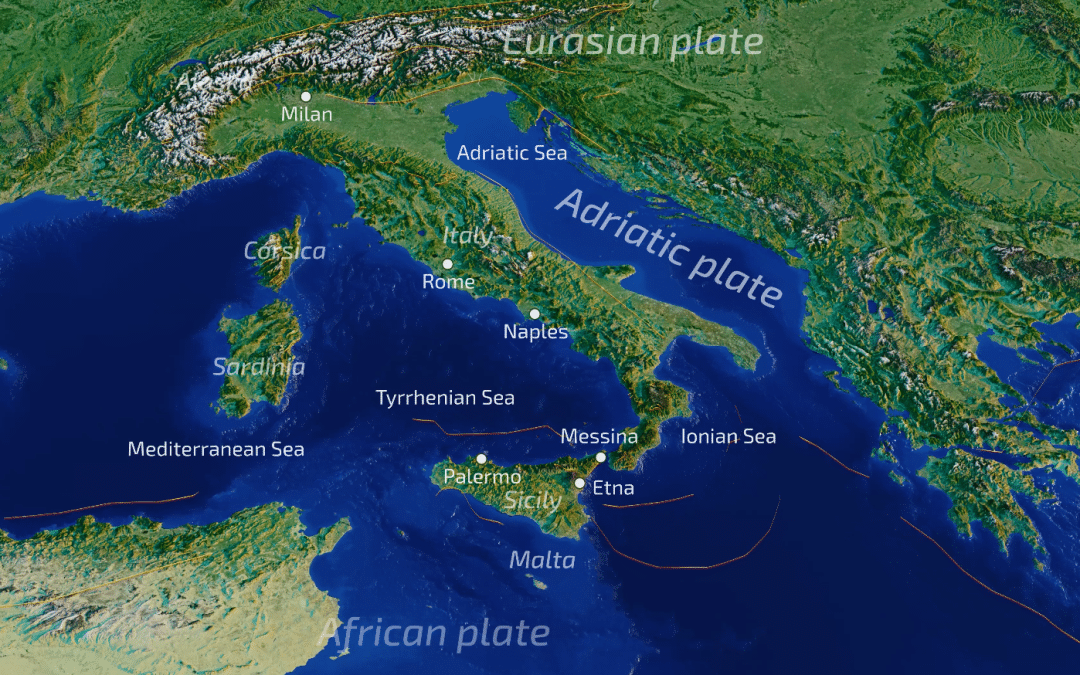Seismicity in Italy is shaped by the country’s complex tectonic setting, which involves the interactions of the African Plate, the Eurasian Plate, and several smaller microplates, including the Adriatic and Tyrrhenian microplates. This geological complexity results in a high frequency of earthquakes and significant seismic risks. Here are the key factors that define seismicity in Italy:
Subduction Zones: A significant driver of seismic activity in Italy is the subduction of the African Plate beneath the Eurasian Plate, particularly along the Calabrian Arc in the south. This subduction process is responsible for deep and powerful earthquakes.
Collision and Compression: The northward movement of the African Plate and the northeastward movement of the Adriatic microplate exert compressional forces on the Italian peninsula, contributing to crustal deformations and mountain-building processes that generate earthquakes.
Extensional Tectonics: Central and southern Italy, particularly along the Apennine Mountains, are characterized by extensional tectonics. This region is stretching and thinning, a process that creates normal faults that are responsible for many of the earthquakes in these areas, such as the devastating 2009 L’Aquila earthquake.
Active Fault Systems: Italy has numerous active fault lines, including those along the Apennine mountain range, which are a frequent source of seismic activity. These faults result from the complex interactions of the plates and microplates under and around Italy.
Historical Seismicity: Italy has a long record of significant earthquakes that have had profound cultural, architectural, and societal impacts. This history is critical for understanding regional seismic patterns and risks.
Volcanic Activity: The subduction process also leads to volcanic activity, most notably in the form of the active volcanoes Vesuvius, Etna, and Stromboli. Volcanic earthquakes are an additional hazard in these regions.
Induced Seismicity: Although much less significant, human activities such as geothermal energy production and reservoir-induced seismicity have also contributed to seismic activity in specific areas of Italy.
Tsunami Risk: Earthquakes in Italy, especially those in the Tyrrhenian Sea and along the southern coast, pose a tsunami risk due to the underwater landslides and fault movements they can trigger.
Seismic Hazard Assessment and Risk Management: Due to its high seismic risk, Italy has developed advanced seismic monitoring networks and strict building codes designed to withstand earthquake impacts. The country also has a strong tradition of earthquake engineering research and public safety education to reduce risks and enhance resilience.
These factors make Italy one of Europe’s most seismically active regions, requiring continuous vigilance, preparedness, and adaptation to mitigate the effects of earthquakes.

